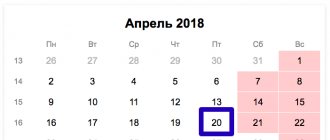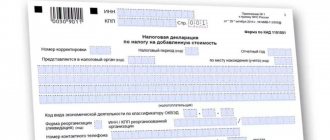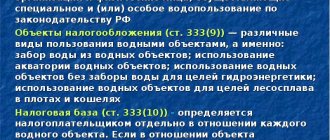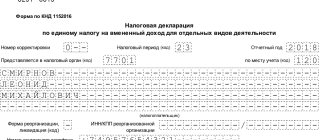Instructions for filling out an income tax return: Open the current form. Fill out the required sheets (title, subsection 1.1 of section 1, sheet 02, appendices No. 1 and No. 2 to sheet 02). If there are certain conditions (for example, payment of dividends), use additional sheets. The Russian federal and regional budgets are replenished from income taxes. Every year, legal entities pay a percentage of their profits to the treasury under the general taxation system. Accountants of these organizations are concerned about how to fill out an income tax return with advance payments, taking into account all the changes and updates that tax authorities constantly make to the reporting. In what form and when to submit the report and what to pay special attention to when making calculations.
Who is the income tax payer?
Payers of income tax are the following persons:
- All Russian legal entities that are subject to the general taxation system;
- Foreign enterprises that operate through permanent representative offices in Russia;
- Foreign enterprises that are recognized as tax residents of the Russian Federation according to an international treaty;
- Foreign enterprises, their actual location is on the territory of the Russian Federation, unless other conditions are provided for by an international treaty.
The tax base
In order to calculate the taxable base when paying income tax, it is necessary to multiply the tax rate by the difference between the income and expenses of the enterprise. If the amount of income is less than the amount of expenses, then the tax base is equal to zero. The enterprise's profit is determined on an accrual basis from the beginning of the calendar year. The income tax legislation provides for different rates, so an enterprise must calculate income separately for each type of activity.
Income tax rate
In accordance with the Tax Code of the Russian Federation, the income tax rate is 20%, of which 2% is transferred to the federal budget, and 18% is transferred to the local budget of the Russian Federation.
For certain categories of legal entities, income tax to the local budget may be reduced, namely:
- For legal entities – residents (participants) of special economic zones and free economic zones;
- For enterprises that are participants in regional investment projects;
- for legal entities that have received the status of resident of the territory of rapid socio-economic development or the free port of Vladivostok
Tax period for transferring income tax
The tax period for income tax is the calendar year. After the end of the tax period, the final payment for income tax is paid, taking into account all advance payments during the year, and a tax return for income tax is submitted.
There are also reporting periods for income tax, which are divided into two groups:
- quarterly reports;
- monthly reports.
The enterprise independently chooses what reporting period it will have for income tax and it must be indicated in the regulatory documents of the enterprise. Depending on which reporting period the company chooses, then at the end of this reporting period it must not only transfer advance payments for income tax, but also submit a tax return for income tax.
Options for calculating income tax
The tax period for tax accrued on profits is equal to a calendar year.
However, during this period of time, the Tax Code of the Russian Federation (clause 2 of Article 286) requires additional tax calculations to be made to determine the amount of advance payments due on it. The principle of tax calculation, no matter what period of the year it is calculated for, is the same: the base to which the tax rate is applied is formed on an accrual basis. But the frequency of calculating advances may be different depending on what frequency the taxpayer himself has chosen for them (Clause 2 of Article 285 of the Tax Code of the Russian Federation) - quarterly or monthly.
When calculating monthly, advances are calculated at the end of each month from the profit actually generated for the period from the beginning of the year. In this case, the amount of the advance payment due for payment for the next month is determined as the difference in tax amounts calculated for the current period and the preceding one (clause 2 of Article 286 of the Tax Code of the Russian Federation).
Quarterly calculations are carried out at the end of each quarter of the year using the same approach as for monthly calculations. That is, the base is taken for all quarters from the beginning of the year, and the amount of tax payable for the last quarter is equal to the difference between its values calculated for the current reporting period and the one preceding it.
However, such a simple calculation option is not available to every taxpayer. It can only be used by those whose sales income for the period of time equal to four quarters preceding the quarter of calculation was not higher than 15 million rubles. on average for each of these quarters, as well as budgetary and autonomous institutions, non-profit and foreign organizations, participants in simple and investment partnerships (clause 3 of Article 286 of the Tax Code of the Russian Federation).
IMPORTANT! For 2021, this limit has been increased to 25 million rubles. on average for the quarter (law dated April 22, 2020 No. 121-FZ). That is, companies that meet the limit for the period from July 2021 to June 2021 may not transfer monthly advances starting with the payment for July 2020. In 2021, the previous limit of 15 million rubles will return.
Important! Recommendation from ConsultantPlus We recommend submitting a notification of the transition to making quarterly advance payments of income tax to the tax authority if in any quarter of 2021 the average sales revenue for the previous four quarters amounted to 25 million rubles. or less for each quarter. .
Other taxpayers who make quarterly calculations have to complicate the calculation procedure by taking the amount of tax calculated based on the results of work in the next quarter equal to the amount of advances subject to monthly (in the amount of 1/3 of the total amount) payment in the quarter following this period (clause 2 Article 286 of the Tax Code of the Russian Federation). Moreover, due to the fact that the timing of tax calculation based on the results of work for the 4th quarter does not make it possible to focus on its actual values, advances paid in the 1st quarter of the year are considered equal to those established for the last quarter of the previous year, i.e. in the amount actually due for 3 sq. income tax.
Accordingly, at the end of the quarter in which advances calculated according to a complicated algorithm were paid, to determine the amount of tax payable to the budget, it is necessary to take into account not only advances accrued for the previous reporting period, but also their amounts required to be paid for the last quarter of the next reporting period. At the same time, the legislator takes into account that taxable income may decrease, and advances in this case will be paid in excess.
What are the deadlines for remitting income taxes?
Income tax payments are divided into the following categories:
| Deadlines for paying income taxes | When is it necessary to pay income tax? |
| Monthly | Advance payments are paid no later than the 28th day of the month following the expired month |
| Quarterly | No later than the 28th day of the month following the expired reporting period. |
| Total, that is, annual | Payments are transferred no later than the date set for submitting the annual tax return |
How to calculate advances based on actual indicators
If the organization has decided to pay to the budget based on the actual profit received, it will have to submit a corresponding application to the inspectorate. This format of interaction with the budget is suitable for economic entities whose activities are seasonal.
In this case, the calculation of monthly advance payments is based on the actual profit for the reporting month. Moreover, the organization will have to submit monthly declarations.
Reporting periods are recognized as one month, two months, three, and so on. The amount payable to the budget is calculated as the tax base multiplied by the liability rate. The advance amount is calculated as the difference between the accrued payment and what has already been paid.
Methods for calculating income tax
When calculating profits, you can use different methods for calculating income tax. Let's look at each one separately:
The first method is the accrual method , in this method the income and expenses of the enterprise are taken into account only in the period in which they are incurred, regardless of when the funds were credited to the account or debited from the account to pay for the goods;
The second method is the cash method , in this method the enterprise’s income and expenses are taken into account when they actually arrived or were debited from the enterprise’s account. That’s why it’s called cash: money received into the account necessarily reflects income, money sent from the account to pay for goods, services or work immediately reflects expenses. This method can be used by legal entities that are subject to the general taxation system and whose revenue for the previous 4 quarters did not exceed 1 million rubles for each period.
Since the cash method has certain limitations, almost all enterprises use the accrual method.
Income tax return for the 3rd quarter
Regardless of how the company generates its reports monthly or quarterly, one form is used when filling out the income tax return. This is the form we will take to reflect the data in the 3rd quarter.
When filling out the income tax return for the third quarter, in a certain line that is located on the title page, you must indicate the coding of this period. This coding is different for all taxpayers, namely:
- 15 - for a declaration generated quarterly for a consolidated group of taxpayers;
- 33 - for a declaration created quarterly by an ordinary taxpayer;
- 43 - for a declaration generated monthly by an ordinary tax payer;
- 65 - for a declaration created monthly for a consolidated group of taxpayers.
In addition to the title page, it is also necessary to fill out certain sections, namely:
Section 1.1 of Section 1 – reflects the amount of tax that must be paid in the reporting period;
Sheet 02 – displays summary data for tax calculation;
Appendix No. 1 and No. 2 to sheet 02 - data on income and expenses that are involved in calculating tax are reflected
All other sections are filled out as needed; in the 3rd quarter there is no need to include in the declaration sections that are filled out during annual reporting.
The reporting form has changed for 2021
by order dated 09/11/2020 No. ED-7-3/ [email protected] changed the form of the income tax return, the order will come into force on 01/01/2021 and applies to the return for 2021. We report for the 3rd quarter on the current form and in electronic format.
The amendments are related to changes in legislation and the Tax Code of the Russian Federation since the approval of the previous form. The report has been changed:
- sheet 02 “Tax calculation”;
- Appendix No. 4 to l. 02 “Calculation of the amount of loss or part of a loss that reduces the tax base”;
- Appendix No. 5 to l. 02 “Calculation of the distribution of advance payments and corporate income tax to the budget of a constituent entity of the Russian Federation by an organization that has separate divisions”;
- Section A “Calculation of investment tax deductions from advance payments and taxes subject to credit to the budget of a constituent entity of the Russian Federation” of Appendix No. 7 to l. 02 “Calculation of investment tax deduction”;
- Section D “Calculation of the reduction in the amount of advance payments and corporate income tax subject to credit to the federal budget when the taxpayer applies an investment tax deduction” of Appendix No. 7 to l. 02 “Calculation of investment tax deduction”;
- sheet 04 “Calculation of corporate income tax on income calculated at rates different from the rate specified in paragraph 1 of Article 284 of the Tax Code of the Russian Federation”;
- page with barcode “00214339” in sheet 08 “Income and expenses of a taxpayer who has made an independent (symmetrical, reverse) adjustment”;
- Appendix No. 2 to the declaration.
The FTS form also updated the barcodes. In 2021, the reporting took into account preferential tax treatment for:
- residents of the Arctic;
- IT companies;
- companies that process hydrocarbons into petrochemical products and produce liquefied natural gas.
Free >check that you filled out the new form correctly using ConsultantPlus.
Features of entering data for the 3rd quarter
When filling out an income tax return with monthly payments, the declaration must reflect the accrual of advance payments for the next quarter, and the main feature of this period is that it is also necessary to reflect advance payments for the first quarter of the next year.
To do this, in sheet 02 you need to use not only lines 290–310, usually filled out in the interim report, but also lines 320–340, the name of which directly indicates the inclusion in them of the amounts of advances accrued for the 1st quarter of the next year.
What has changed in the declaration in 2021
The current form of the income tax return was approved by order of the Federal Tax Service of Russia dated September 23, 2019 No. ММВ-7-3/ [email protected] Compared to the previous form, it has undergone significant changes: the barcode has changed, new taxpayer identification codes have appeared. For the majority of organizations this is still 01, but there are also the following:
- 07 and 08 - for participants in investment projects and investment contracts;
- 09 and 10 - for educational and medical organizations;
- 11 - for those who combine medical and educational activities;
- 12 - for social service organizations;
- 13 - for travel agencies;
- 14 - for regional MSW operators.
If, in accordance with regional legislation, the taxpayer has the right to a reduced tax rate, in line 171 on sheet 02 we indicate the details of the regional regulatory act.
In addition, lines have appeared to indicate the tax base for participation in an investment partnership; new appendix No. 7 to l. 2 must be completed by those applying the investment deduction.








